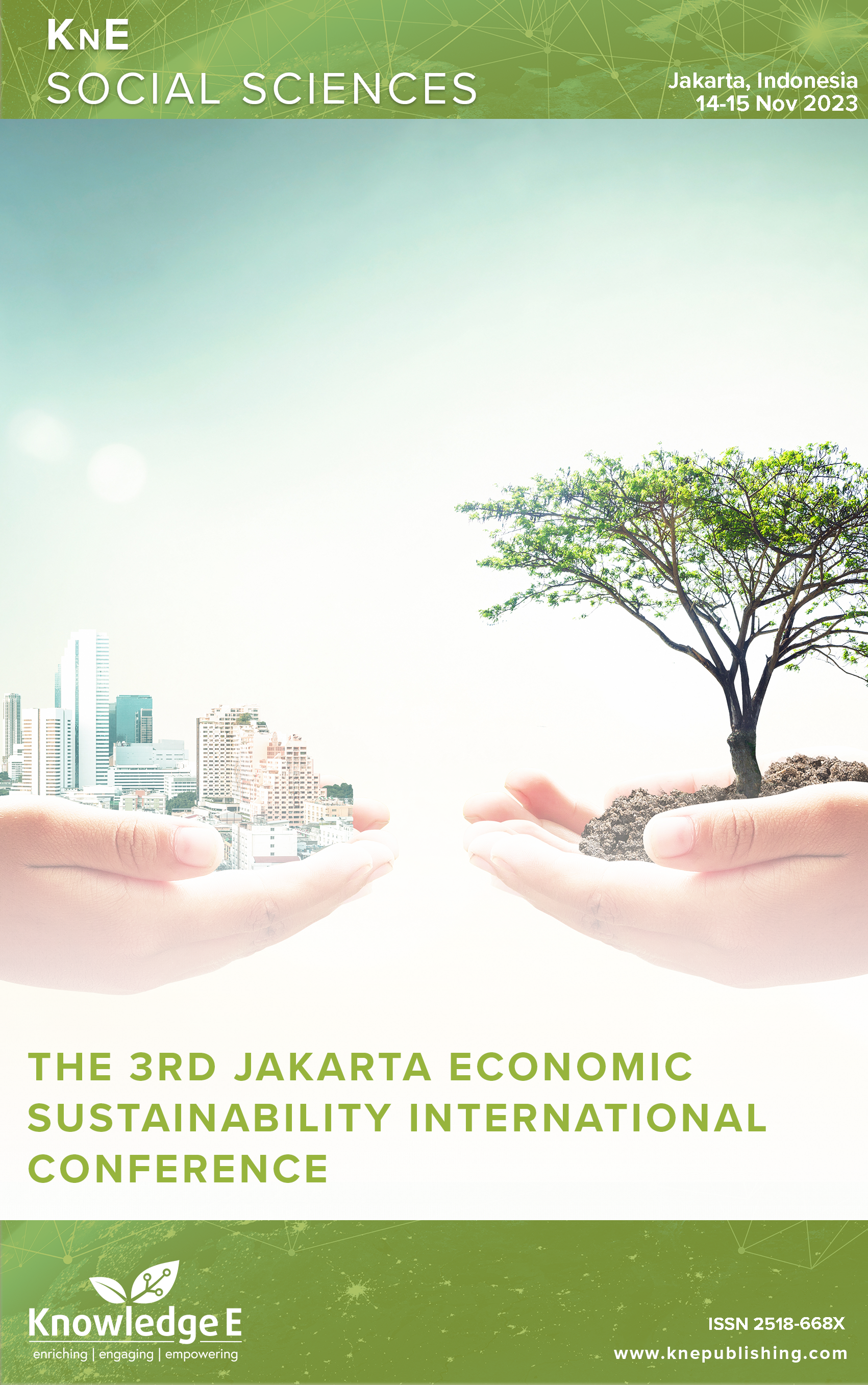Unveiling the Impact of Quality of Work Life on Organizational Commitment: Insights from a Research Academy Managers in China
DOI:
https://doi.org/10.18502/kss.v9i20.16531Abstract
This research examines the impact of quality of work life (QWL) on the organizational commitment of managers within a research academy in China. It follows quantitative methodology by employing a questionnaire survey and subsequent multiple regression analysis. The findings suggest a strong and statistically significant impact of QWL dimensions on organizational commitment. The results highlight a predominantly positive perception of QWL among managers, coupled with a favorable view of organizational commitment. Another finding depicts academy tends to opt for position replacement over termination, thereby nurturing a strong sense of commitment in terms of employees. This research implies that the organization tends to replace positions instead of terminating employees in the face of work challenges suggesting a commitment to employee’s QWL. This approach can foster a sense of loyalty and commitment among managers, contributing to lower turnover rates and a more stable workforce.
Keywords: human resource management, organization behavior, work challenge
References
Beauregard TA, Henry LC. Making the link between work-life balance practices and organizational performance. Human Resource Management Review 2009;19:9–22. https://doi.org/10.1016/j.hrmr.2008.09.001. DOI: https://doi.org/10.1016/j.hrmr.2008.09.001
Dregger J. Human Relations virtual special issue: The quality of working life revisited. Human Relations 2021;74:153–6. https://doi.org/10.1177/0018726720973156. DOI: https://doi.org/10.1177/0018726720973156
Pereira APL, Maia LG, Santos SVM dos, Robazzi ML do CC, Da Silva LA. Preditores associados à qualidade de vida no trabalho de docentes da universidade pública. Revista de Salud Pública 2020;22:1–8. https://doi.org/10.15446/rsap.v22n5.75923. DOI: https://doi.org/10.15446/rsap.v22n5.75923
Bailey DE, Kurland NB. A review of telework research: Findings, new directions, and lessons for the study of modern work. J Organ Behav 2002;23:383–400. https://doi.org/10.1002/job.144. DOI: https://doi.org/10.1002/job.144
Allen TD, Armstrong J. Further examination of the link between work-family conflict and physical health. American Behavioral Scientist 2006;49:1204–21. https://doi.org/10.1177/0002764206286386. DOI: https://doi.org/10.1177/0002764206286386
Easton S, Van Laar D. User manual for the work-related quality of life (WRQoL) Scale: A measure of quality of working life. 2nd ed. Portsmouth: University of Portsmouth; 2018.
Malik ME, Naeem B. Towards understanding controversy on herzberg theory of motivation. World Appl Sci J 2013;24:1031–6. https://doi.org/10.5829/idosi.wasj.2013.24.08.2442.
Lee B, Lee C, Choi I, Kim J. Analyzing Determinants of Job Satisfaction Based on Two- Factor Theory. Sustainability 2022;14:12557. https://doi.org/10.3390/su141912557. DOI: https://doi.org/10.3390/su141912557
Alrawahi S, Sellgren SF, Altouby S, Alwahaibi N, Brommels M. The application of Herzberg’s two-factor theory of motivation to job satisfaction in clinical laboratories in Omani hospitals. Heliyon 2020;6:e04829. https://doi.org/10.1016/j.heliyon.2020.e04829. DOI: https://doi.org/10.1016/j.heliyon.2020.e04829
Tian X, Swatdikun T, Chalomklang C. The impact of quality of work life and organization commitment on turnover intention: Empirical evidence from Dunhuang Academy, China †1. Science, Technology, and Social Sciences Procedia 2023;2023:3.
Ma Y, Sung TP, Xu Y. The impact of perceived organizational support and psychological capital on turnover intention: Based on the survey of teachers in Guangxi private colleges and universities. ICIC Express Letters, Part B: Applications 2022;13:1045–52. https://doi.org/10.24507/icicelb.13.10.1045.
Fernández M, Sánchez JI, Lanaj K. Work-life balance and organizational commitment: The moderating role of family supportive supervisor behaviors. J Vocat Behav 2019;110:278–87.
Srinivasaiah R, Devappa Renuka S, Nanjundeswaraswamy TS. Quality management practices and quality of work life – a conceptual model development. International Journal of Quality & Reliability Management 2023;40:391–418. https://doi.org/10.1108/IJQRM-06-2021-0189. DOI: https://doi.org/10.1108/IJQRM-06-2021-0189
Gaan N, Shin Y. Generation Z software employees turnover intention. Current Psychology 2023;42:27344–59. https://doi.org/10.1007/s12144-022-03847-9. DOI: https://doi.org/10.1007/s12144-022-03847-9
Huang Y, Swatdikun T, Prempanichnukul V, Chen X. The impact of employee compensation and organizational commitment on turnover intention: A case of Sichuan University of Science & Engineering, China. 92nd International Scientific Conference on Economic and Social Development, Bangkok: Kasetsart University; 2023.
Maswani, Syah TYR, Anindita R. The relationship between organizational culture and job satisfaction towards organizational commitment and employee performance. Russ J Agric Socioecon Sci 2019;88:144–52. https://doi.org/10.18551/rjoas.2019- 04.19. DOI: https://doi.org/10.18551/rjoas.2019-04.19
Bobbio A, Canova L, Manganelli AM. Organizational work-home culture and its relations with the work–family interface and employees’ subjective well-being. Appl Res Qual Life 2022;17:2933–66. https://doi.org/10.1007/s11482-022-10048-w. DOI: https://doi.org/10.1007/s11482-022-10048-w
Jeffrey Hill E, Grzywacz JG, Allen S, Blanchard VL, Matz-Costa C, Shulkin S, et al. Defining and conceptualizing workplace flexibility. Community Work Fam 2008;11:149–63. https://doi.org/10.1080/13668800802024678. DOI: https://doi.org/10.1080/13668800802024678

